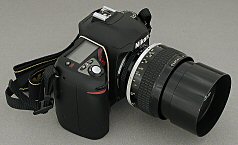<<PREVIOUS -
HOME -
CONTENTS -
NEXT>>
NIKON D70 -
![]()

|
Nikon D70 105mm Wide Field Messier Images Index |
|
M56 |
M89 |
M100 |
Nikon D70 50mm Wide Field Messier Images Index
|
<<PREVIOUS -
HOME -
CONTENTS -
NEXT>>
NIKON D70 -
![]()

|
Nikon D70 105mm Wide Field Messier Images Index |
|
M56 |
M89 |
M100 |
Nikon D70 50mm Wide Field Messier Images Index
|
French astromoner Charles Messier (1730-1817) created a catalog of nebulae and star clusters so that these objects would not be confused for comets which was his observing focus. Messier claimed to have discoved 21 comets. The Messier catalog contains objects observed by Messier and his fellow astronomer Pierre Mechain (1744-1805). The largest telescope used by Messier was 3.5 inch refractor.
The Messier catalog lists 110 deep sky objects cataloged by M numbers: M1 through M110. Messier objects are an excellent observing list for those intersted in observing deep sky objects and whoes observing location is in the mid-northern latitudes.
The above wide field Messier images were taken by David Haworth with a Nikon D70 digital camera with a 105mm or 50mm camera lens.
The image scale is the same for all the images and these images provide a good way to compare the size of the Messier deep sky objects with each other. For most of the 105mm camera lens images the image size or field of view is about 13° x 8.5°, north is top and west is right . For comparison the moon is about 0.5° in diameter and therefore the images are about 26 moon diameters wide and 17 moon diameters high.
Use the monitor test patterns to calibrate monitor brightness, contrast, height and width.